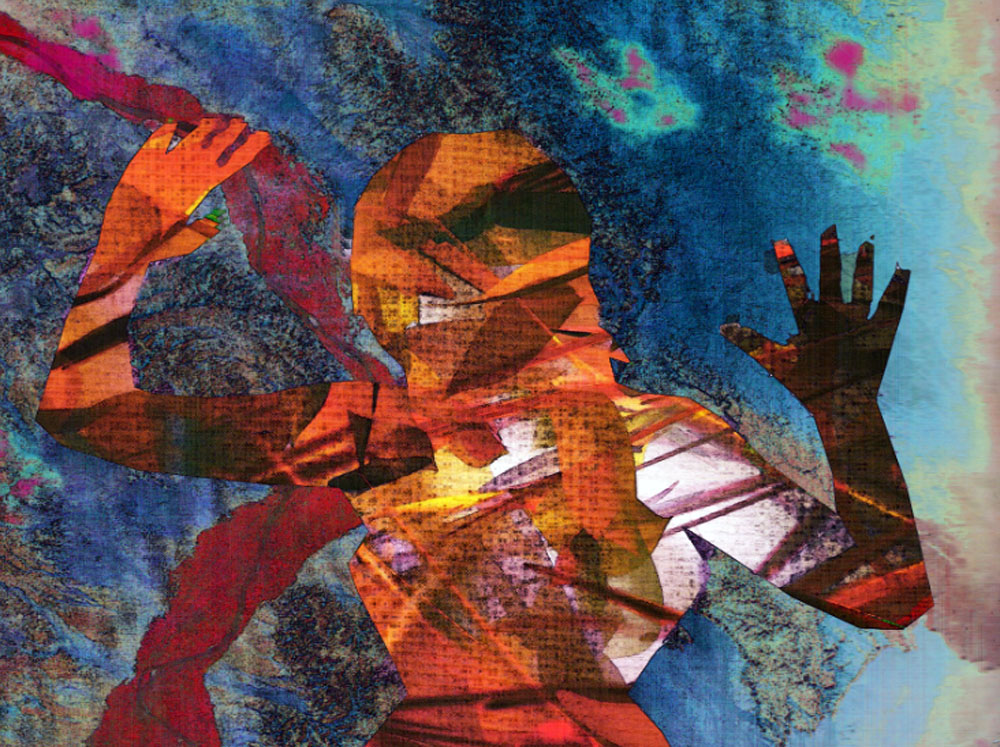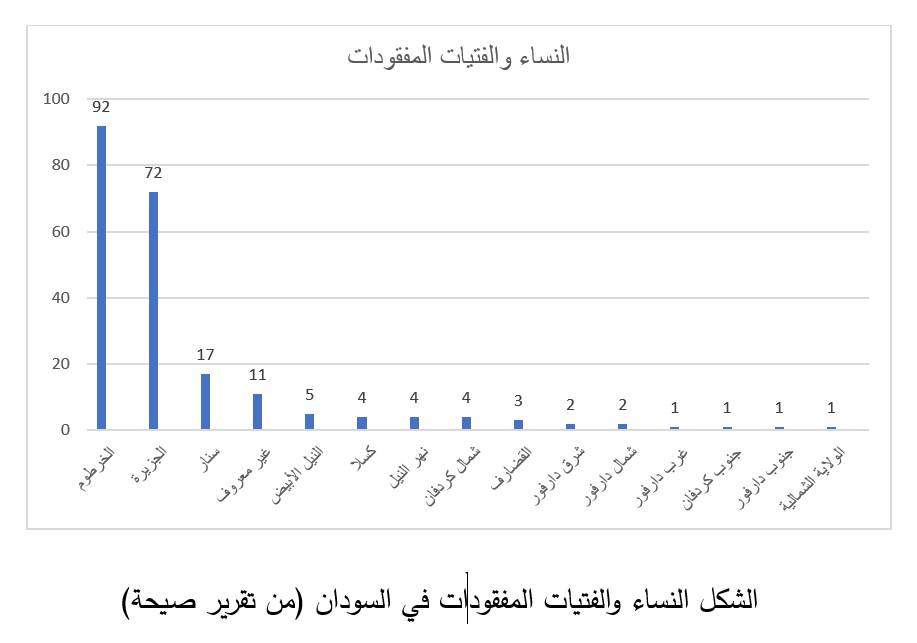
Sudan: The Disappearance of Women - Stories of War, Pain, and Silence
Sudan Media Forum
July 9, 2025 — (Women Journalists Network), Aisha Al-Samani, Madaniya News
Since the outbreak of war between the Sudanese Armed Forces and the Rapid Support Forces (RSF) in mid-April 2023, Sudanese women have become some of the most affected victims of the conflict. This war has stripped them of even their most basic dreams—dreams of education for their children, access to healthcare, and a life of dignity. They never imagined a time would come when death would seem like mercy, when dignity would be violated, and when they would endure the horrors of abduction, rape, and exploitation.
On June 26, 2023, Ms. Suham found herself reliving a nightmare she had once experienced as a child when she was separated from her family under similar circumstances. Today, tragedy has returned to her doorstep: her 19-year-old daughter, Ruqayya, left their home in Omdurman to fetch some necessities and never came back.
“Since her disappearance, I’ve searched everywhere,” Suham says, her voice cracking with anguish. “My heart is breaking. I went to public gathering areas, mosques, I posted flyers. Fearing the worst, I visited hospitals, morgues, and markets. We thought maybe she was hit by a stray bullet… but there’s no trace, no word.”
Desperate, Suham turned to both the RSF and the Sudanese Armed Forces for help. RSF soldiers took Ruqayya’s photo and promised to look for her. The army did the same. But days turned into weeks, and weeks into months—with no news.
“We haven’t left a place unexplored,” she continues. “I’ve searched every corner, clinging to the hope that I’ll hear something about my daughter… but nothing.”
Though over a year has passed, Suham refuses to give up. She continues searching, fueled by an undying hope. “Just as I once found my family after many years, I believe I will find Ruqayya,” she says. “I see her in my dreams, wearing her school backpack, preparing for exams, dreaming of studying aviation to become a flight attendant—just as she always wished.”
Suham didn’t stop there. She reached out to human rights organizations and those working on missing persons’ cases. One of those was SIHA Network, which took on her story and supported her search. Their efforts led to the creation of a short documentary titled “Where is Ruqayya?”, which chronicles Suham’s painful journey and highlights just one of hundreds of forgotten stories buried under the weight of war.
Watch the documentary: Where is Ruqayya?
Broken Families and the Hidden Crisis of Disappeared Women
The story of Ruqayya is far from unique—it is one among dozens of heartbreaking cases of women and girls who have gone missing since the war broke out.
According to data compiled by the Strategic Initiative for Women in the Horn of Africa (SIHA Network), at least 291 women, girls, and female children have been forcibly disappeared in Sudan between April 15, 2023, and June 2025. Similarly, the African Centre for Justice and Peace Studies (ACJPS) has recorded 123 disappearances, including 7 minors.
But these aren’t just numbers—they represent shattered families, anguished parents, and siblings who live every day clinging to the hope of reunion. Since the moment their daughters disappeared, life has stood still. Questions haunt their minds:
“Are they alive? Have they eaten? Are they safe? What horrors are they enduring?”
The questions are endless, and the answers never come.
Speaking to Madaniya News, attorney Shawgi Yaqoub from ACJPS confirmed the center had documented 123 missing women, including minors, but had only been able to reach the families of 39 of them.
Meanwhile, Hadeel Jaafar from SIHA’s Gender-Based Violence Response Unit said the organization had documented 291 cases of forced disappearance since the war began. The youngest among them was a 5-month-old infant, missing along with her mother. The oldest was an 80-year-old woman.
An informed source from one Sudanese state revealed that local observers had tracked at least 350 disappearances, mostly girls aged between 14 and 17. Of these, 84 were later found, but many reported being subjected to horrific sexual violence and physical abuse at the hands of RSF forces, according to their testimonies.
Image: Missing women and girls in Sudan – SIHA report graphic - A photo is attached in the album at the bottom of the report.
Silence and Stigma
Yaqoub explained that their documentation efforts rely on field monitors, online submissions, and reports from families. However, many families, particularly in rural areas, are afraid to report disappearances due to social stigma and fear of shame, especially when sexual violence is suspected.
Other major challenges include blackouts in communication networks, the expanding reach of the war, and media blackouts or disinformation, particularly in RSF-controlled areas.
A SIHA report obtained by Madaniya News noted that much of the data for its findings came from public sources and partnerships with initiatives like "Mafqoud" ("Missing"). The number of online reports about missing persons has surged since the war began—an alarming indication of the deepening crisis.
The report explains how SIHA monitored social media posts, contacted families, and attempted to verify cases—only to encounter challenges such as inaccessible phone numbers, families afraid to speak, and deletion of online posts about missing women, likely due to fear or shame. These obstacles severely limit the accuracy and completeness of reporting.
Moreover, most reports come from urban centers, while cases from rural areas remain largely undocumented—concealing the true scale of the crisis.
Disappearances in the Early Days of the War
The SIHA report also identifies a recurring pattern: a sharp increase in missing person reports immediately following the Rapid Support Forces’ invasion of new territories.
This trend first emerged in Khartoum, and later in the Gezira and Sennar states. In Khartoum, most disappearances occurred in April and May 2023, during the early RSF advance.
The capital is home to many female university students living in dormitories, as well as independent working women, often far from family. As the war began, the RSF reportedly raided residential areas, spreading fear among these women.
One tragic case occurred on May 28, 2023, when the body of Hala Ahmed Ishaq, a young woman from Haj Yousif, was found inside a looted car bearing bullet holes. Hala had been shot in the head. Since the vehicle had been in RSF possession, the report suggests that she was likely abducted by the RSF before her death.
This ongoing pattern of disappearances - particularly of women and girls - reveals a hidden and devastating dimension of the Sudanese conflict. These are not just war casualties, but targets of a brutal campaign of fear, silence, and erasure, taking place in the shadows.
Disappear on the move
Many disappearances have occurred while women were attempting to flee conflict zones or perform routine daily tasks—moving between locations, fetching food or medicine, or seeking basic supplies. Simply leaving the house to access necessities has become a high-risk act for countless women and girls.
For instance, SIHA Network received testimony from the family of Jihad Fadallah Suleiman Nasser, a mother in her 30s, who went missing in July 2023 while searching for medicine for her son. She and her friend Wahla were last seen riding in a vehicle with a member of the Rapid Support Forces (RSF). When her family later contacted the RSF soldier, he claimed they had been dropped off and warned the family not to call again. The family searched for her in Hattab camp, where they were told of clashes and the death of two girls, though no confirmation has ever been received.
Forced Servitude: A Disturbing Pattern
Worryingly, there are credible reports that RSF forces have subjected women to forced domestic servitude in areas under their control. In parts of Khartoum and also Wad Madani (Gezira State), women have reportedly been trapped in their homes and coerced into cooking, cleaning, and performing services for RSF fighters under threat.
This systematic abuse adds a harrowing layer to the crisis of disappearances—turning homes into prisons and women into captives, denied dignity, freedom, and safety.
Legal Action and International Advocacy
Shawgi Yaqoub from the African Centre for Justice and Peace Studies (ACJPS) noted that the center works with a network of lawyers and trauma specialists, offering both legal and psychosocial support to the families of missing women. These families are also organized into advocacy groups to amplify their voices and demand justice.
He added that ACJPS engages in strategic litigation using regional and international mechanisms to pursue justice. The organization assists survivors in filing cases with international bodies and collaborates with the UN Working Group on Enforced Disappearances to pressure governments and investigate cases.
While Yaqoub admitted there’s no exact data on the number of women who have returned after being disappeared, he confirmed that some survivors have reappeared and are receiving support.
SIHA’s Urgent Recommendations
In its report, SIHA Network called for immediate and urgent actions to protect missing women and girls and to pressure authorities to take tangible steps in locating them.
Key recommendations included:
Immediate reunification of missing persons with their families, especially women and girls who were forcibly disappeared, unlawfully detained, or kidnapped.
Creation of a national civil society network dedicated to tracking missing persons and supporting affected families.
Expansion of public efforts to obtain information about the whereabouts of the disappeared from all conflict parties.
Establishment of community-based protection systems to prevent disappearances, monitor high-risk zones, and share timely updates on missing persons.
Intensification of governmental investigations, ensuring accountability and justice in line with Sudan’s obligations under the International Convention for the Protection of All Persons from Enforced Disappearance.
Appeals for assistance from international entities, such as the UN Working Group on Enforced Disappearances and the UN Committee on Enforced Disappearances, to monitor and highlight cases and bring global attention to the crisis.
Community Action Is Key
The report concludes by emphasizing that civil society and public engagement are critical. The protection and safe return of missing women and girls in Sudan depends on collective action, continuous vigilance, and a shared commitment to justice.
By shining a light on this atrocity and mobilizing public support, it is possible to alleviate the devastating effects of enforced disappearances and ensure that Sudan’s women and girls are seen, heard, and protected.
--
This article is published by the Sudan Media Forum and its member organizations, based on reporting by I’lamiyat Network, to shed light on one of the most urgent and underreported consequences of Sudan’s ongoing war - the large-scale disappearance of women and girls. The magnitude of this crisis demands a coordinated and sustained response to combat impunity and support survivors and their families.



